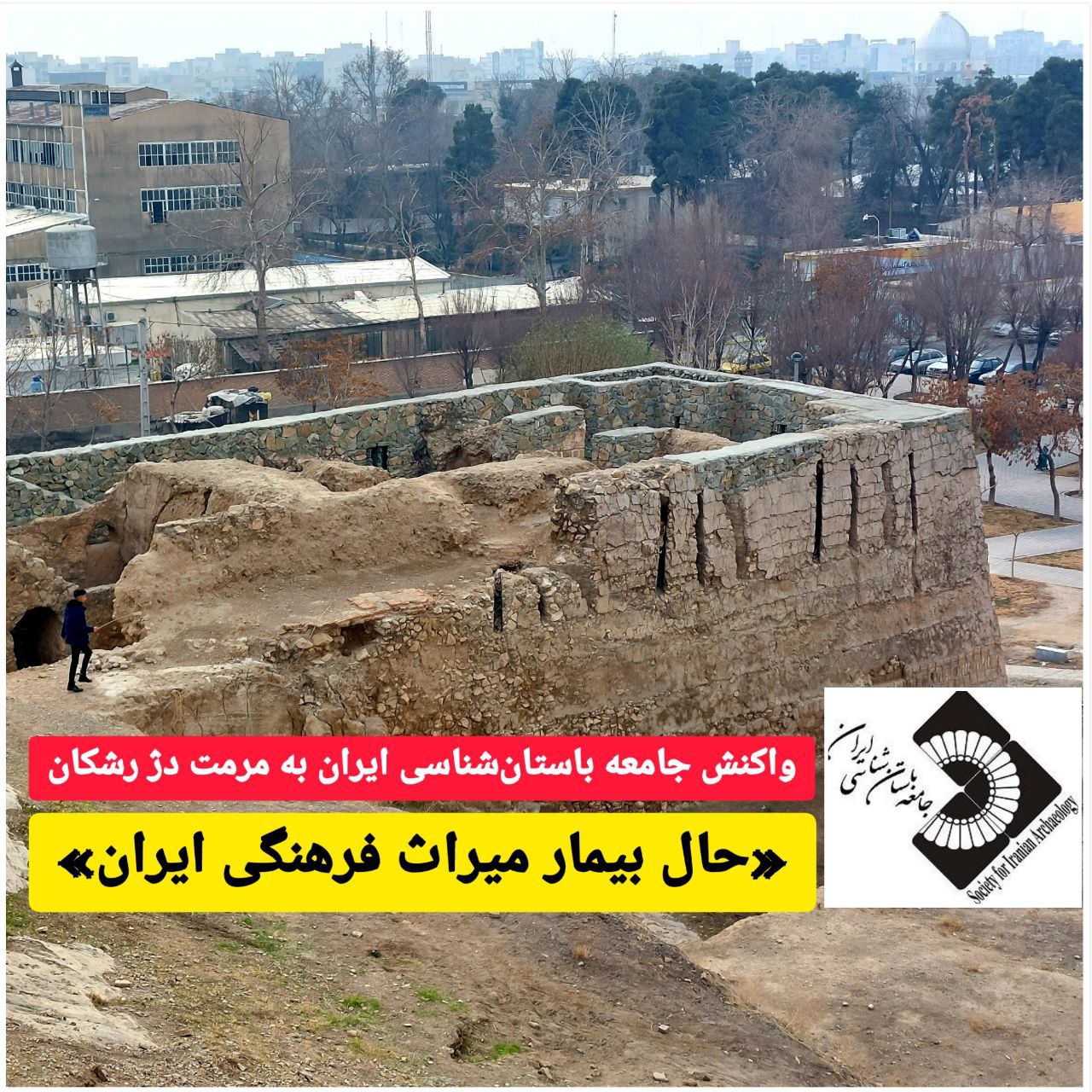The reaction of the Iranian archeological society following the heritage report on the restoration of Rashkan fortress
“Iran’s sick state of cultural heritage”
Knowledge and expertise are obviously used in the restoration of Rashkan fortress
In a statement, the Archaeological Society of Iran called for the responsibility and accountability of various parts of the cultural heritage for the restorations.
In the statement of the Iranian Archaeological Society, it is stated: There is not a day that new and impressive news about the destruction and looting of Iran’s cultural heritage does not reach the ears of those who care and are interested in it. From dams like Chamshir – which was recently drained – which instead of being an opportunity for research and extracting information in the field of Iranian history and culture, become the graveyard of the country’s historical sites, to urban historical contexts like Yazd and Shiraz. which are destroyed speculatively and due to the carelessness of the responsible institutions and their failure to act, inappropriate planning and weak specialized supervision.
Various and numerous historical buildings such as Sheikh Lotfollah Mosque and Shah Abbasi Mosque of Isfahan are de-authenticated in the most clumsy way by the hands of ignorant people and in the name of restoration and organization without proper supervision.
Recently, the “repair” of parts of the Rashkan Fort and Kohandej Ray (Tehran District 20) has met with concern from the organization of experts and lovers of historical and cultural heritage, and it is surprising that so far there has been no response from the responsible institutions such as the Vice-Chancellor of Cultural Heritage of the country, the General Administration of National Heritage Sites. And Jahani, Cultural Heritage Research Institute, and most importantly, Tehran Province’s General Heritage Administration, are not seen towards the destruction, damage and damage to the authenticity of this historical-cultural work.
Rashkan fortress is the latest example of the chain of destructions and the sick condition of Iran’s cultural heritage. Published images are more expressive than words and descriptions.
Restoration of a two-thousand-year-old building with inconsistent and heterogeneous materials and the use of stone and cement! That too in the heart of the capital and not in a distant corner. Obviously, knowledge and expertise are played. There is no management, monitoring, evaluation and accountability. An incident that has gradually become a normal process in Iran’s cultural heritage organizations.
There is no doubt that, unfortunately, a major part of the protection, restoration and organizing activities of the country’s historical buildings and sites are done without the supervision of experts and specialists.
The responsible centers should be responsible for such activities that mark the authenticity and nature of the country’s historical monuments.
Public opinion should know why and how the cultural and historical monuments of the country are being damaged in such a way with the public budget.
How to select the presenters of these programs, implement and monitor them is now more than ever a matter of serious question and ambiguity.
Why does the Conservation and Restoration Research Institute have no supervision over the preservation and restoration of the country’s historical monuments and where is its place in this inappropriate and inefficient structure? Why does this scientific and administrative center not protest this wrong procedure responsibly?
“Archaeological Society of Iran”, while expressing regret and warning about what is happening to the cultural and civilizational heritage of the country, the responsibility and accountability of the custodian institutions, especially the deputy of the country’s cultural heritage, the General Administration of Preservation and Restoration of Historical Buildings and Sites, the General Administration of National and World Heritage Sites, and The provincial centers, especially the General Administration of Cultural Heritage of Tehran province, are demanding about the Rashkan fortress. He also invites the specialists and restoration community of the country by criticizing this restoration procedure, while defending the professional reputation of Iran’s preservation and restoration community, which has brilliant works in its portfolio, to think about ways to prevent these destructive actions from happening.
https://tinyurl.com/2ppzslgh
instagram.com/miras_bashi
@mirasbashi
This post is written by maryamatyabi
